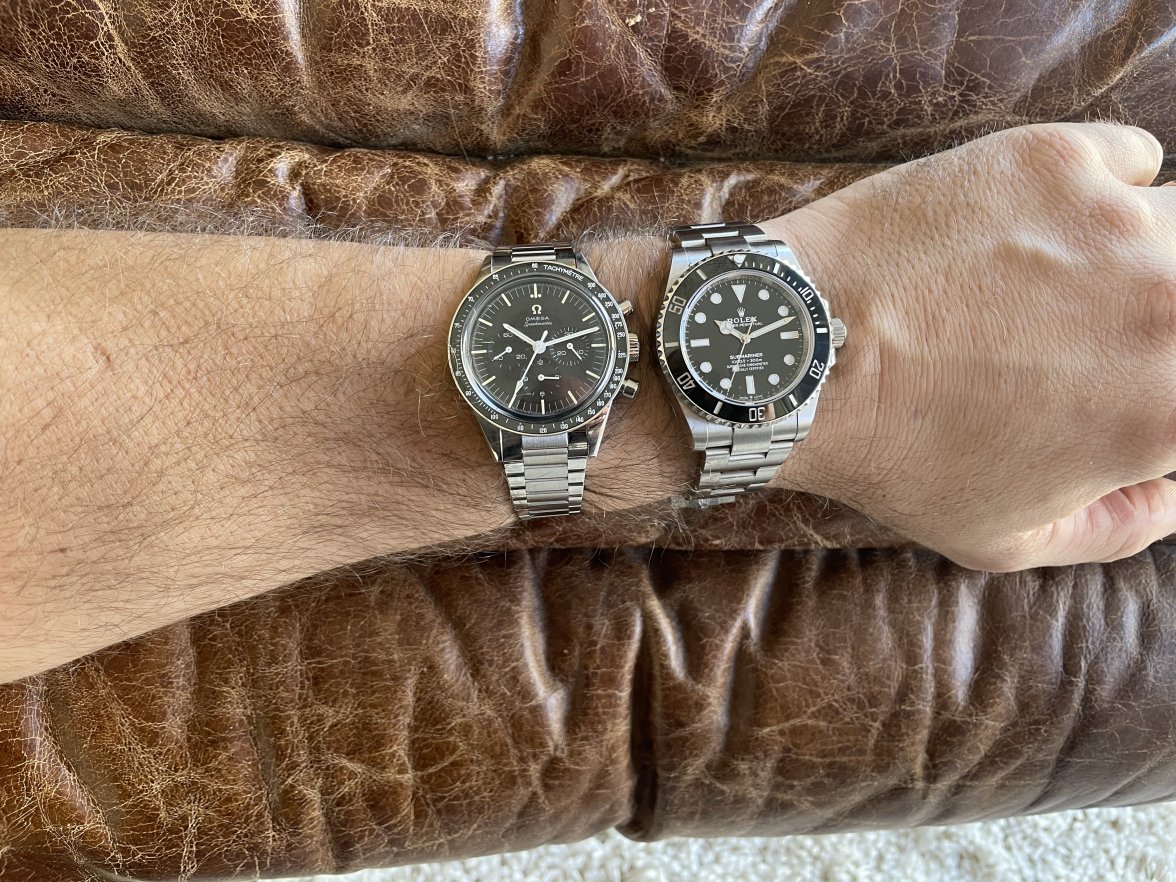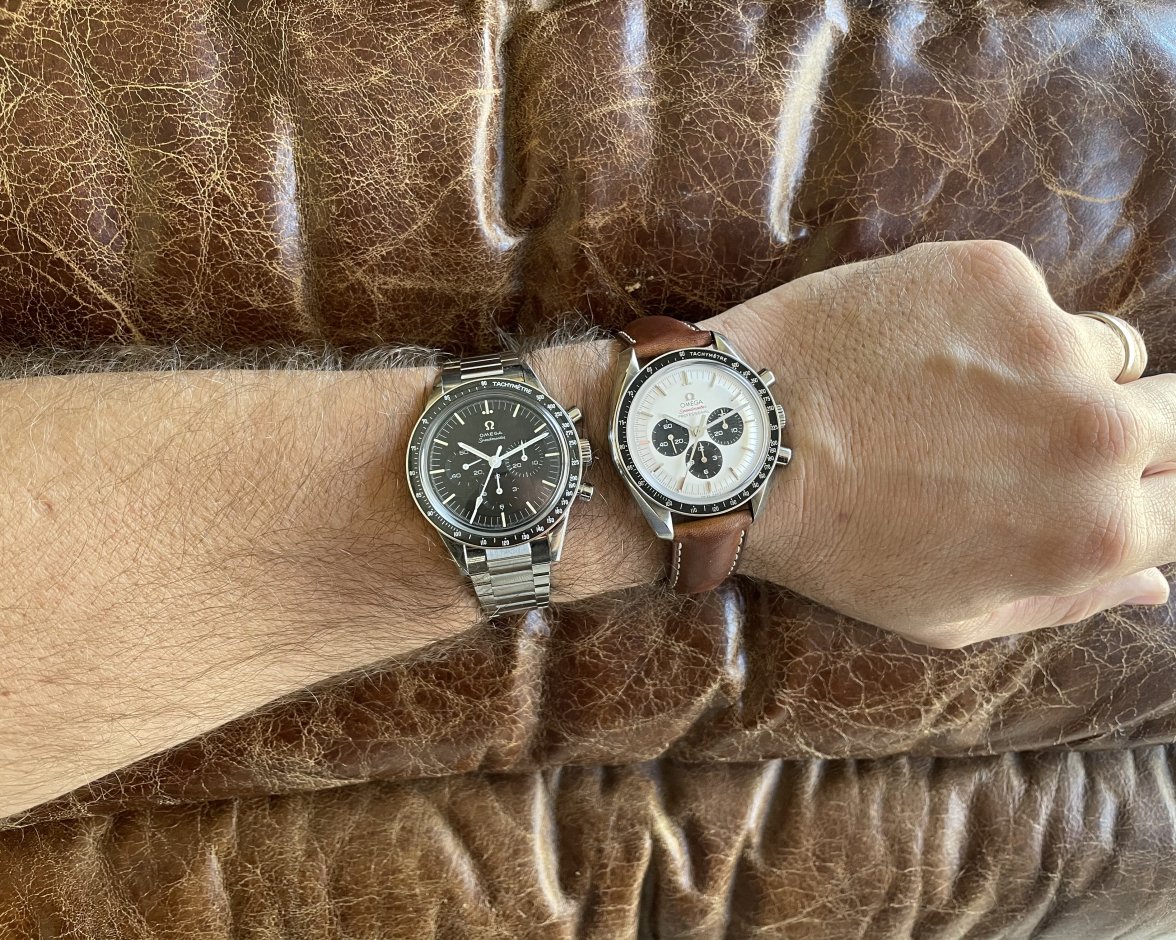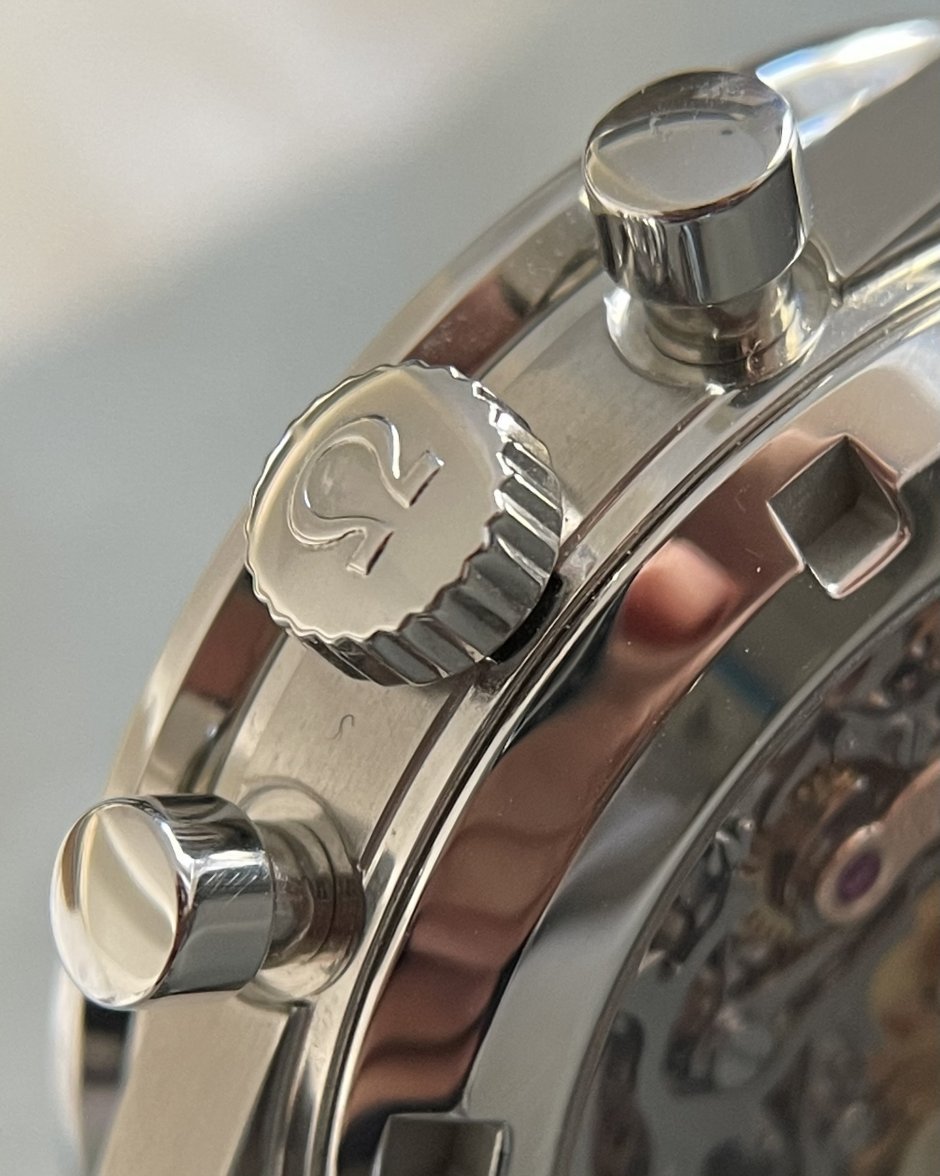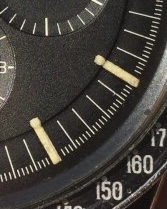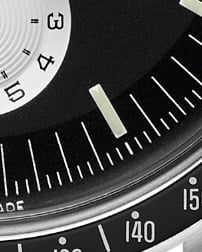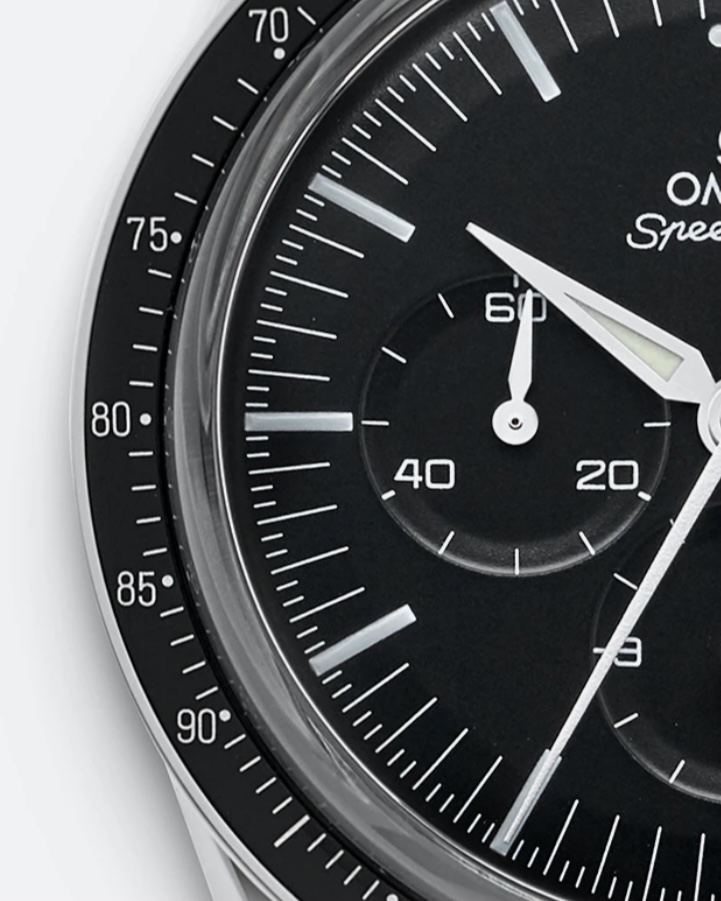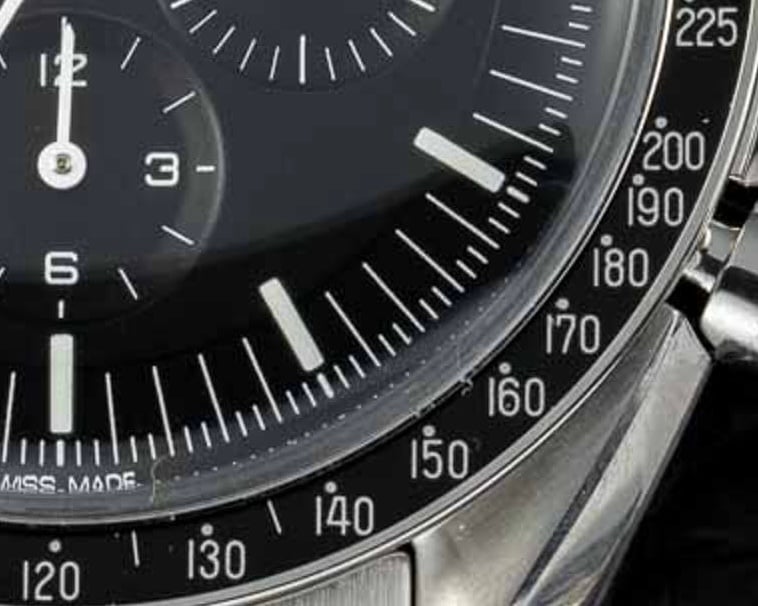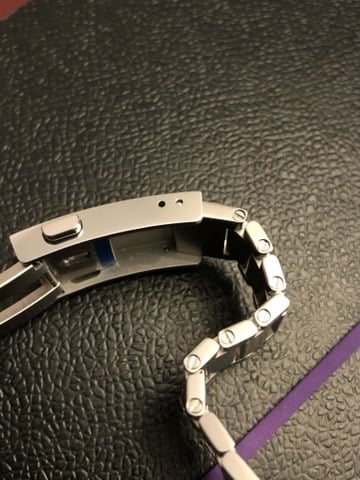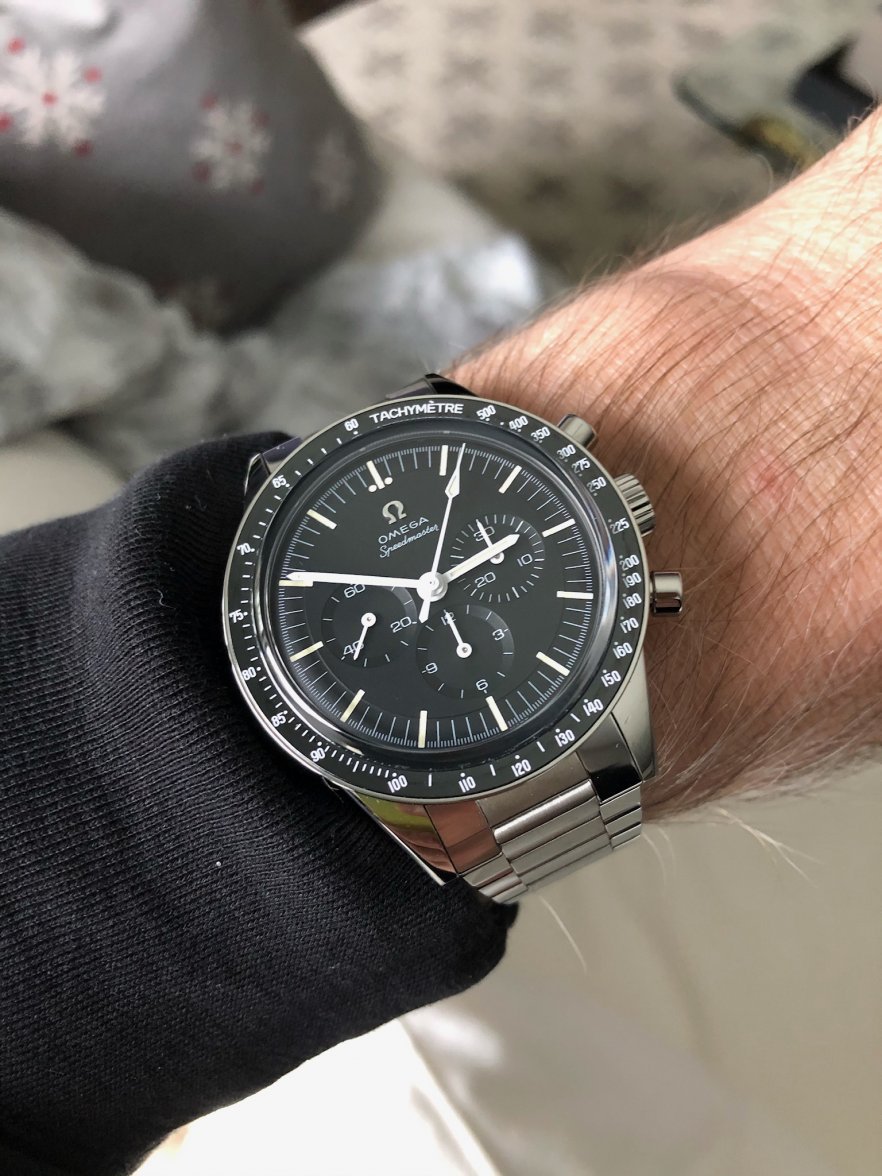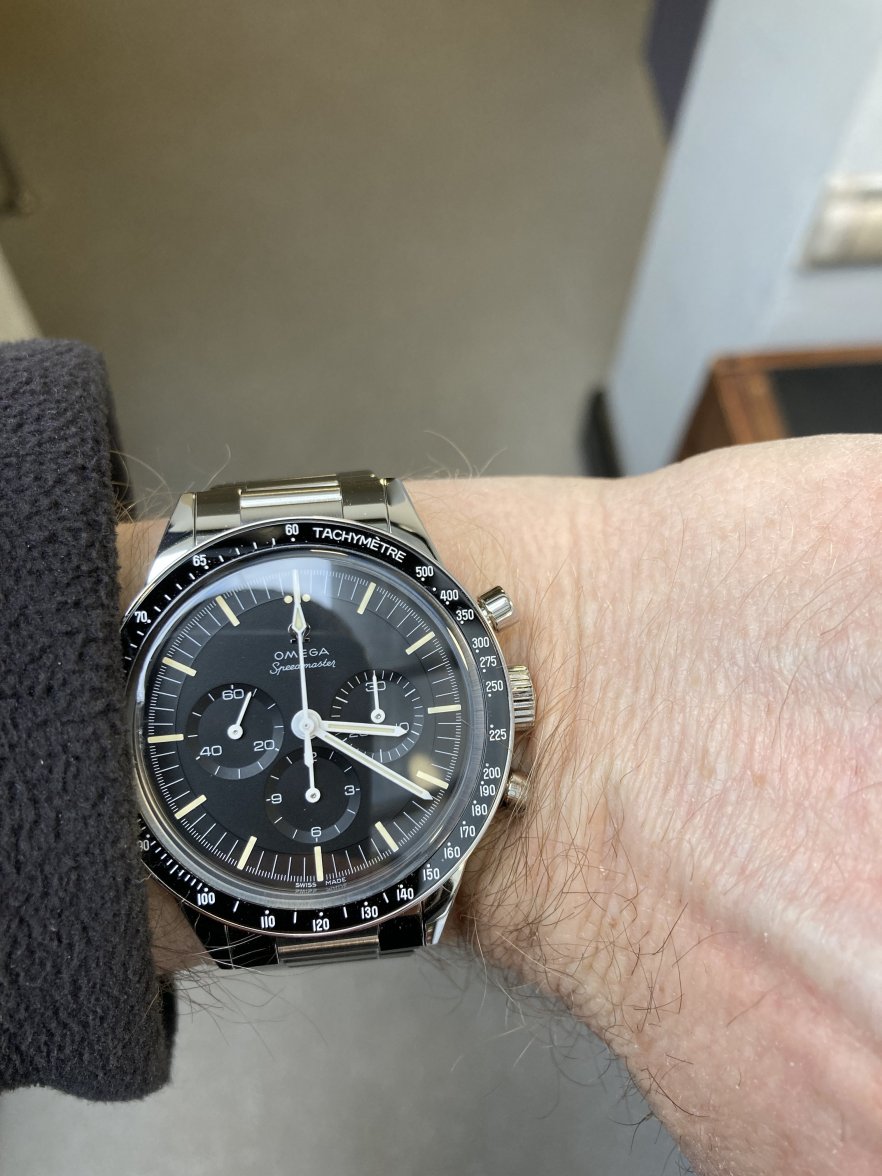cvalue13
·As I have other thoughts I suppose I’ll collect them on this thread.
Size = Punches Above Weight Class
Another topic worth mentioning is the the size of this watch, at the historically-accurate 39.7mm.
I suppose on paper someone could be turned off from this watch if they believe bigger is better.
But the design of this watch is such that 39.7mm wears both modest, but also larger than its measure.
For reference below, I have a 21cm/8.25in wrist.
For comparison is the 39.7mm cal.321B next to a 41mm 2020 Sub. Due to the Sub’s bezel-to-dial proportions, the 41mm Sub I find wears smaller than its on paper measure; conversely, for the same reasons but reversed, the thin-bezeled 39.7mm cal.321B in black-on-black wears larger than its on-paper measure. (The tapering of the cal.321 bracelet also perhaps provides a visual amplification of the head size.)
Meanwhile, a comparison photo of the cal.321B against the 42mm asymmetrical Tokyo 2020 speaks for itself:
The black-on-black of the cal.321B provides a larger visual footprint than does the black-on-white of the Tokyo 2020 Panda. And in this comparison, the straight lugs of the cal.321B does its normal thing of seeming to enlarge the footprint.
So, I’d summarize by saying the on-paper 39.7mm should not be saddled with assumptions.
Size = Punches Above Weight Class
Another topic worth mentioning is the the size of this watch, at the historically-accurate 39.7mm.
I suppose on paper someone could be turned off from this watch if they believe bigger is better.
But the design of this watch is such that 39.7mm wears both modest, but also larger than its measure.
For reference below, I have a 21cm/8.25in wrist.
For comparison is the 39.7mm cal.321B next to a 41mm 2020 Sub. Due to the Sub’s bezel-to-dial proportions, the 41mm Sub I find wears smaller than its on paper measure; conversely, for the same reasons but reversed, the thin-bezeled 39.7mm cal.321B in black-on-black wears larger than its on-paper measure. (The tapering of the cal.321 bracelet also perhaps provides a visual amplification of the head size.)
Meanwhile, a comparison photo of the cal.321B against the 42mm asymmetrical Tokyo 2020 speaks for itself:
The black-on-black of the cal.321B provides a larger visual footprint than does the black-on-white of the Tokyo 2020 Panda. And in this comparison, the straight lugs of the cal.321B does its normal thing of seeming to enlarge the footprint.
So, I’d summarize by saying the on-paper 39.7mm should not be saddled with assumptions.
